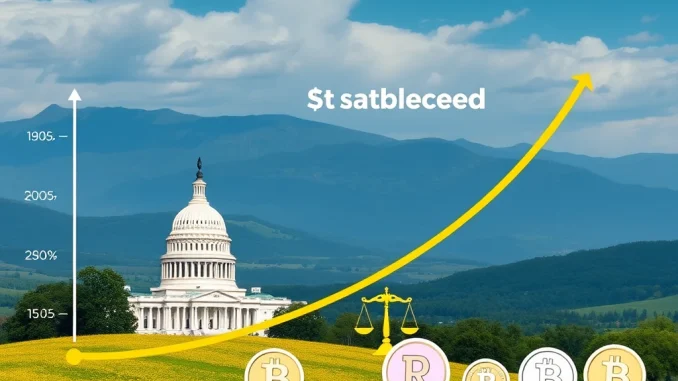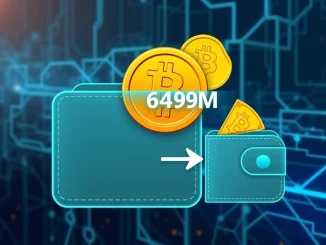
Are you following the developments around a potential US stablecoin bill? Many in the crypto market anticipate that clear legislation could pave the way for significant expansion. However, a recent analysis from financial giant JPMorgan strikes a more cautious tone, suggesting that even with a bill, the expected explosive growth in the stablecoin market might be overly optimistic.
JPMorgan’s View on the Stablecoin Bill’s Impact
JPMorgan analysts have tempered expectations regarding the future of the stablecoin market. Contrary to some projections that see the market quadrupling in size within a couple of years post-legislation, JPMorgan suggests this outlook is likely too bullish.
Why the caution? According to reports, their analysis highlights key restrictions present in current stablecoin bill proposals being considered in the United States. Two significant points raised are:
- Proposed bills prohibit stablecoins from paying interest to holders.
- They aim to define stablecoins primarily as payment instruments, akin to traditional currencies.
These factors, JPMorgan argues, could significantly hinder the competitive edge of stablecoins when compared to traditional financial products that *do* offer yield, such as money market funds or tokenized securities.
Will the US Stablecoin Bill Affect All Stablecoins Equally?
The analysts also pointed out potential risks for certain types of stablecoins under proposed legislation. Specifically, they warned that cryptocurrency-pegged stablecoins or algorithmic stablecoins, like DAI, could face bans depending on the final shape of the law. This suggests a regulatory preference might lean towards stablecoins fully backed by fiat currency or high-quality reserves, rather than those relying on crypto collateral or complex algorithms for price stability.
Comparing Stablecoin Market Potential to Other Yield Products
In contrast to the potentially limited growth of the stablecoin market under new regulations, JPMorgan analysts anticipate continued expansion for yield-generating products built on blockchain technology. They specifically mentioned examples like BlackRock’s tokenized government bond fund, BUIDL, and Figure Markets’ security-type yield token, YLDS.
Here’s a simple comparison of the potential competitive landscape as seen by JPMorgan:
| Product Type | Potential Under US Bill (JPM View) | Key Feature | Competitiveness vs. Traditional Finance |
|---|---|---|---|
| Stablecoins | Limited growth potential | Primarily Payment Instrument | Less competitive (no interest) |
| Yield Products (BUIDL, YLDS) | Continued growth expected | Offer Yield/Interest | More competitive (offer yield) |
This perspective underscores a potential shift in focus within the digital asset space, where tokenized assets offering yield might gain prominence over non-yielding stablecoins if regulatory clarity restricts the latter’s functionality.
What Does This Mean for the Crypto Market?
JPMorgan’s analysis serves as a reminder that while regulatory clarity from a stablecoin bill is desired, the specifics of the legislation matter greatly. A bill that strictly defines stablecoins as non-interest-bearing payment tools could cap their growth potential and steer institutional and retail interest towards other forms of tokenized assets that *can* offer returns.
It highlights a crucial challenge for the stablecoin market: balancing regulatory compliance with features that make them attractive compared to existing financial instruments and emerging blockchain-based yield products. The path forward for stablecoins in the US remains intertwined with the legislative process and the final rules that emerge.
Conclusion: A Reality Check on Stablecoin Growth
JPMorgan’s cautious stance provides a valuable reality check for those expecting a regulatory green light to automatically trigger a massive surge in the stablecoin market. The analysts argue that proposed restrictions, particularly the ban on interest payments, could limit stablecoins’ appeal compared to yield-bearing alternatives, whether traditional or blockchain-based. As the US stablecoin bill progresses, the industry will need to closely watch the details to understand the true implications for different types of stablecoins and the broader crypto market landscape. While regulation is necessary, its design will ultimately determine the trajectory of this crucial segment of the digital asset ecosystem.



